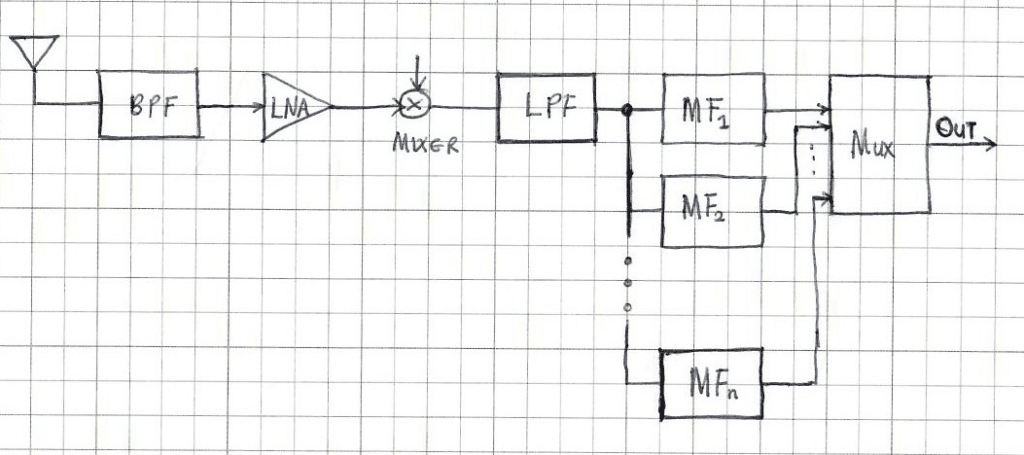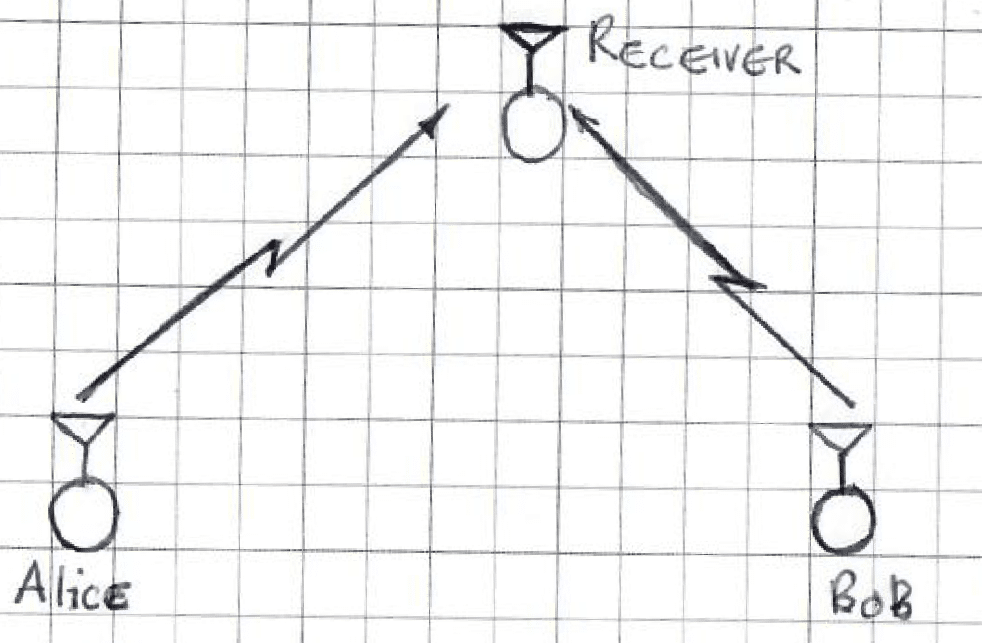Link quality indicators (LQI) are proprietary numbers that give an indication of how good a communication channel is for transmission and correct reception of signals. Most of the existing LQI’s however are unable to discriminate between a noisy channel and a hostile jammer because they are based on energy profile of the received signal. Consider a friendly sensor, Alice, and an eavesdropper Bob all sending messages to a receiver with Bob having ulterior motives to flood the channel and disrupt communication. Figure 1 illustrates a typical channel jamming setup.
Figure 1: Alice transmitting to receiver with a jamming signal from Bob.
We will like to answer the decision problem of whether there is a message sent from Alice without necessarily having success in decoding the sent message. This is similar to determining the LQI to ensure efficient communication. Here we deploy a bank of matched filters to a predetermined physical address of all non-hostile transmitters. Note that these chunks of bytes in the transmitted signal are not part of the signal. The matched filter answers two potential questions: (1) was a packet transmitted? and (2) which device transmitted the packet? The output of the matched filtering stage is fed to downstream blocks for further signal processing. The matched filter implements three tasks:
(i) An energy detection threshold T1 is applied to determine whether a packet was present or not. (ii) If a packet was present, the matched filter output is computed and compared to the previous value from the preceding epoch. The ratio is then compared to a threshold T2 (iii) If steps (i) and (ii) are passed, then, a Pearsons correlation coefficient is computed and compared to a final threshold T3. The implementation at the receiver node is illustrated in Figure 2.

Figure 2: Signal processing blocks at the receiver node.
The algorithm described leads to detecting whether a packet was transmitted and from which source up to signal-to-noise-plus-interference values well below 0dB.
